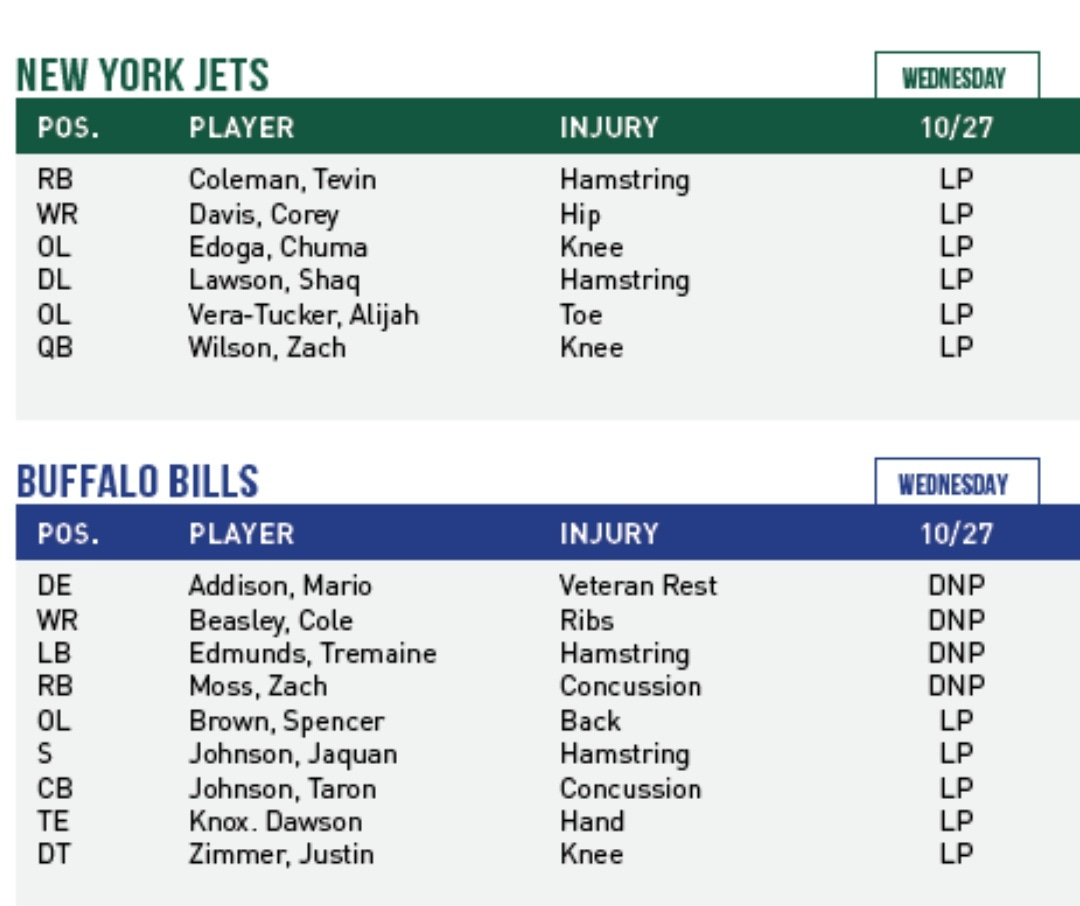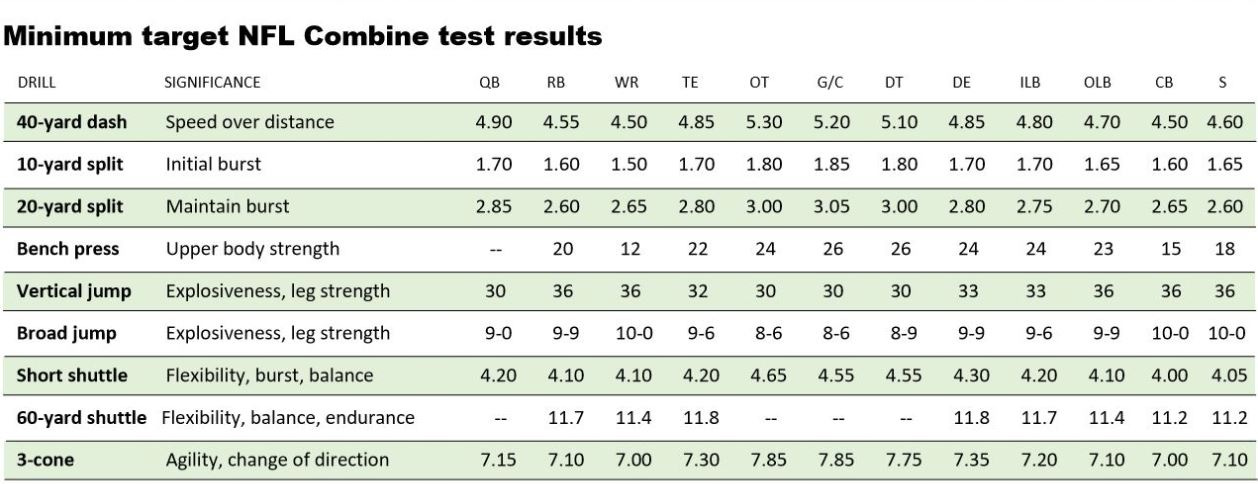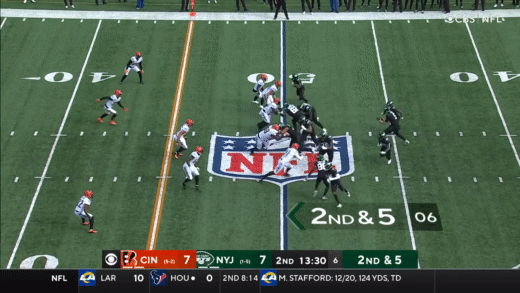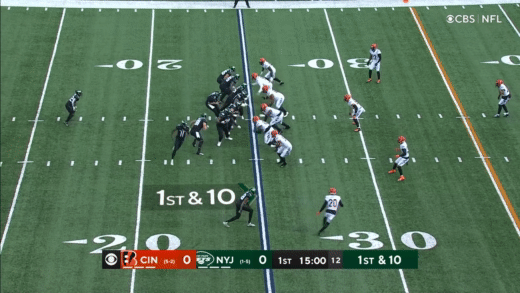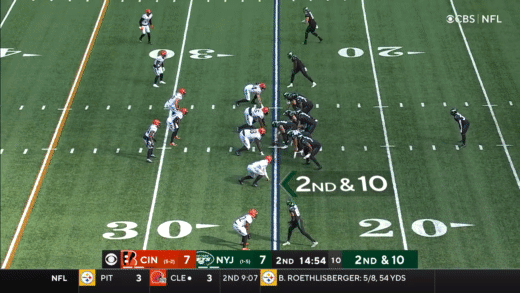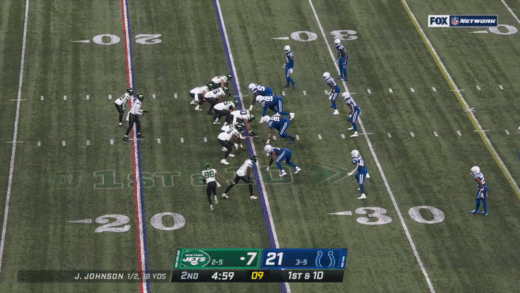Michael Carter - Mr Versatile
With the Jets rookie really starting to perform, we take a look at what's changed.
Good morning Jets fans and welcome to Thursday’s edition of The Jets Way. Tomorrow we’ll dive headfirst into the preview for the Buffalo Bills game, but today I want to talk everything Michael Carter, that’s Michael Carter the RB, and not MC2, who’s also worthy of an appreciation post, maybe we’ll do that next week.
📰 News & Notes 📝
Before we get into the Michael Carter focus, there are a couple of things to quickly touch upon.
Mike White will start on Sunday against the Buffalo Bills. I wrote about this on Monday so won’t get back into it, but that’s absolutely the right call.
Joe Flacco will be the backup this week rather than Josh Johnson because Johnson has already been activated twice from the practice squad.
Jets offensive lineman Conor McDermott has been designated to return to practice. He’s been on IR since suffering a knee injury in the pre-season against the Packers.
Injury Report 🤕
Stealing the talent
I was looking back through some pre-draft notes on Michael Carter, he was a player we focused on quite a lot and the predominant thought was that he would be gone by the end of the 2nd round. After all, he’d just put up 1512 yards from scrimmage for North Carolina to go with 11 touchdowns. He’d have put up even better numbers had he not had to share the backfield role with Javonte Williams who was drafted #35 overall by the Denver Broncos.
Before the 2020 draft, NFL.com’s Gil Brandt posted an outline for what teams consider the minimum requirement for each position in the combine drills
It was a really interesting insight into how talent is evaluated in terms of their raw metrics. So let’s take this above table and compare our very own Michael Carter. I’m only going to look at the four key metrics that teams usually focus in on for running backs.
The 40-yard is used for long speed, the 3-cone for lateral quickness, and the vertical and broad are used to measure explosiveness.
40-yard dash - The minimum required for an RB is under 4.55, MC ran a 4.50
3-cone drill - The minimum required is under 7.10, MC ran 6.81 (91st percentile)
Vertical jump - Minimum is 36”, MC jumped 34” (41st percentile)
Broad - jump - Minimum is 117”, MC jumped 119” (49th percentile)
In the lead up to the 2020 draft, less than 55% of RB’s tested over the previous three years had achieved a 7.10 3-cone or lower, so that was a key metric for Carter.
When researching Joe Douglas for my article on his drafting record, I came across an interesting snippet around how Douglas will absolutely look at the measurables, and will absolutely listen to the advanced analytical data around the minimum requirements and how the results are indicators for future success. But a player’s actual production is always a big factor in the evaluation.
Some GM’s, some scouts, and some talent evaluators sometimes get lost in the measurables and forget about the player’s actual on-field performance. Joe Douglas didn’t, the Jets fell in love with Carter, they were amazed he was there at the top of the 4th and couldn’t believe their look when they were able to select him #107 overall.
Learning
Like with Elijah Moore, there is an element of the Jets needing time to figure out how best to use Michael Carter.
He started the season with just 4 carries against Carolina, he had just 11 targets through the first 4 games of the season. In three of the 4 games, he was rushing for less than 3 yards per carry.
Fast-forward to today and Carter hasn’t been below that 3 yards per carry over his last four games, in fact, his average is just over 4 yards per carry in that timeframe. He’s been targeted 28 times in the passing game and he’s racked up 420 yards from scrimmage over the last four games, averaging over 100 yards per game.
So what’s changed with Michael Carter?
Rookies going to Rookie
A simple explanation is he’s getting more experienced. It sounds simplistic, but sometimes the simple answer is the right one. He’s learning the offense, he’s understanding where his gaps are, he’s developing more patience, more trust, more confidence in his lineman. The more touches he gets, the easier it is for the game to slow down for you.
I would say the Jet’s offensive line is blocking better for the backs, but the average run block grade for a Jets lineman through the first 5 weeks of the season was 72.54, in comparison to 65.08 in the last three weeks. But we’ve seen some good plays in that time, even if it’s not consistently good.
Changing the calls
This is something that I wanted to see backed up by the numbers. Over the last three weeks, I’ve noticed the Jets running a higher percentage of gap runs in comparison to the zone runs they were calling to start the season. Obviously, we heard a lot about the zone scheme when Mike LaFleur was hired, due to it being a staple of the Shanahan offense, and to start the season that’s what we saw.
Through the first 5 weeks of the season, MC ran 47 times and 38 of those were on designed zone runs, so we’re talking 81%. Over the last three weeks, that percentage has dropped to just 55%, so a significant uptick in gap runs for Carter. If you go further and look at the most recent evidence of the last two games, it’s dropped further to 43%.
When you consider that against the Bengals and Colts, MC had two of his best rushing performances of the season with 77 and 49 yards respectively, you start to see a little pattern forming.
Everyone says the NFL is about adapting your scheme to the talent you have around you, and that’s exactly what we’re seeing from the Jets offense and Mike LaFleur.
The Influence of Mike
Some of Carter’s uptick can be attributed to the emergence and performance of QB Mike White. In the two games where Mike White saw the majority of the snaps, Carter was targeted 23 times.
The scheme didn’t change for Mike White, but his internal clock has been working. He gets rid of the ball almost a full second faster than Zach Wilson, mainly because he plays that boring brand of football that Coach Saleh was talking about earlier this season.
These aren’t splashy plays, but it plays like this that win you football games. That’s a simple throw for Mike and a simple catch for Carter, it’s not the level of difficulty of the throw, it’s the decision to take what the defense is giving you. You go from 1st and 10, to 2nd and 1.
Being able to move the ball down the field through the air opens up more opportunities in the run game, but also in the receiving game for the RB’s. This is just a great call, a great play and some good blocking
There is an element of trust between Mike White and Michael Carter, some pre-snap recognition by White on where his best matchups are. Here is a perfect example of a one-read set-up because why move off the read if the match-up is significantly in your favor:
This is something that I will stress until I’m blue in the face. The effectiveness of this offensive system is getting the ball into your playmakers hands in space and allowing them to get the YAC and make people miss.
Michael Carter has done a fantastic job so far this season in that regard. Carter’s 21 missed tackles forced are 3rd amongst all rookie RB’s, falling just behind his UNC teammate Javonte Williams (35) and former Alabama product Najee Harris (27). His 263 receiving yards puts him 2nd in the league amongst Rookies, with Harris the only man in front of him (289).
Helped by the Rookie
It’s not just Michael Carter’s natural talent, Mike LaFleur’s scheme or Mike White’s performance helping the 4th round rookie, AVT has played a huge part as well.
The Jets 1st round rookie is performing close to a pro-bowl level so far in 2021 in terms of run-blocking, he may still have a ways to go in terms of pass protection, but his ability to move defenders out of the way is clear.
Looking at Carter’s performance, running behind AVT is a smart thing to do.
When running directly behind AVT, Carter is rushing for 4.7 yards per carry, and when rushing between AVT and Connor McGovern, he’s rushing at 4.8 yards per carry. Now compare that with rushing behind GVR (3.2 yards per carry) and between GVR and McGovern (1.6 yards per carry) and the performance of the former USC standout starts to make sense.
I love this play for so many reasons. The running by MC, the power to shrug off two tackles, but when you watch it for a second time, just watch AVT and how he’s flipping these guys like burgers at a diner.
At this point in the season, Carter has the same number of attempts rushing between AVT and McGovern (18) as he does GVR and McGovern (16), I expect to see that pull away as the season progresses.
That’s it for today. As always thank you for reading and if you haven’t subscribed yet, then you can just hit the button below to make sure you never miss an issue. If you like what you see, then any shares on social media are greatly appreciated.




